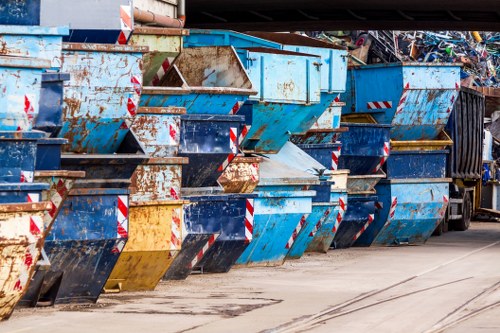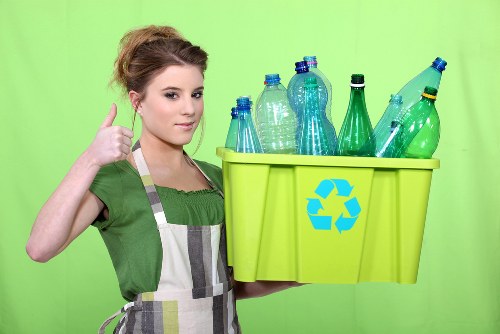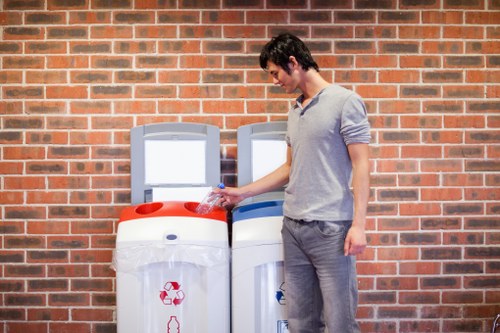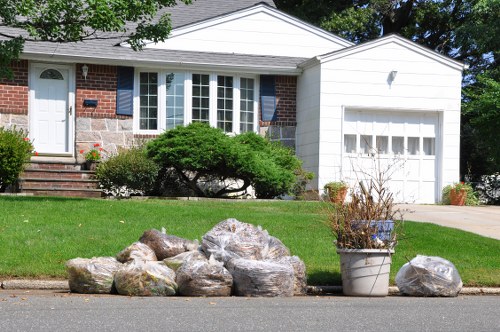White Goods Recycle in Mattress Collection
Recycling white goods and mattresses plays a crucial role in promoting environmental sustainability and reducing landfill waste. As households and businesses continue to generate significant amounts of these bulky items, finding efficient and eco-friendly disposal methods has become increasingly important. This article delves into the intricacies of white goods recycling within mattress collection programs, highlighting the benefits, processes, and best practices that contribute to a greener future.

Understanding White Goods and Their Environmental Impact
White goods refer to large household appliances such as refrigerators, washing machines, ovens, and dishwashers. These items are integral to modern living, providing convenience and efficiency in daily tasks. However, their disposal poses significant environmental challenges due to their size, weight, and the materials they contain.
When white goods are discarded improperly, they contribute to the growing problem of electronic waste, or e-waste. This type of waste is particularly hazardous because many appliances contain harmful substances like refrigerants, heavy metals, and plastics that can leach into the soil and water if not handled correctly.
Recycling white goods helps mitigate these environmental risks by ensuring that valuable materials are recovered and reused, thereby reducing the need for virgin resource extraction and minimizing the carbon footprint associated with manufacturing new products.

The Role of Mattress Collection in Sustainable Waste Management
Mattresses are another significant source of waste, often ending up in landfills where they take up valuable space and contribute to environmental degradation. Mattresses are composed of a variety of materials, including foam, springs, fabrics, and adhesives, many of which are non-biodegradable and challenging to recycle.
Integrating mattress collection with white goods recycling offers a comprehensive approach to managing bulky waste. This synergy not only streamlines the recycling process but also maximizes resource recovery by addressing multiple waste streams simultaneously.
By combining these two types of waste management, municipalities and recycling programs can optimize their operations, reduce overall costs, and enhance the effectiveness of recycling efforts. This integrated approach is essential for promoting sustainability and achieving long-term environmental goals.

Benefits of Recycling White Goods in Mattress Collection
Recycling white goods within mattress collection programs offers numerous benefits that extend beyond basic waste reduction. These advantages encompass environmental, economic, and social dimensions, contributing to a holistic approach to sustainability.
- Environmental Protection: Proper recycling prevents harmful substances from contaminating ecosystems, safeguarding air, water, and soil quality.
- Resource Conservation: Recovering metals, plastics, and other materials reduces the demand for raw resource extraction, preserving natural habitats.
- Energy Savings: Recycling materials typically consumes less energy compared to producing new items from scratch, lowering overall energy consumption.
- Economic Growth: The recycling industry creates jobs and stimulates economic activity, contributing to local and national economies.
- Community Health: Reducing landfill usage and managing waste responsibly improves public health by minimizing exposure to hazardous materials.
These benefits underscore the importance of integrating white goods recycling into mattress collection initiatives, fostering a more sustainable and resilient waste management system.
Additionally, this integration promotes public awareness and participation in recycling programs, encouraging individuals to take an active role in environmental conservation efforts.

Processes Involved in White Goods and Mattress Recycling
The recycling process for white goods and mattresses involves several key steps designed to maximize material recovery and minimize environmental impact. Understanding these processes is essential for ensuring the effectiveness and efficiency of recycling programs.
- Collection: Items are collected from various sources, including residential households, commercial establishments, and donation centers. Scheduled pickups and drop-off points facilitate convenient disposal options for consumers.
- Sorting and Separation: Once collected, white goods and mattresses are transported to recycling facilities where they undergo sorting. This stage involves separating different materials, such as metals, plastics, and foam, to prepare them for further processing.
- Dismantling: Appliances are carefully disassembled to extract valuable components. This may involve removing motors, compressors, and electronic circuits from white goods, while mattresses are dismantled to separate springs, foam, and fabric layers.
- Processing: Separated materials are processed for recycling. Metals are melted and purified, plastics are shredded and reformed, and foam materials may undergo chemical recycling to be reused in new products.
- Manufacturing: Recycled materials are used to create new products, closing the recycling loop and reducing the need for virgin materials. This step ensures that the materials remain in circulation, contributing to a circular economy.
Each step in the recycling process is critical for ensuring that materials are handled responsibly and efficiently. Proper implementation of these processes can significantly enhance the sustainability of waste management practices.
Moreover, advancements in recycling technologies continue to improve the efficiency and effectiveness of these processes, enabling higher rates of material recovery and better quality of recycled products.

Challenges in White Goods and Mattress Recycling
Despite the numerous benefits, recycling white goods and mattresses presents several challenges that need to be addressed to optimize the process and maximize material recovery.
Dismantling Complexity
Modern white goods are often composed of intricate components and materials that are difficult to separate. The presence of electronic circuits, refrigerants, and various metals complicates the dismantling process, requiring specialized equipment and trained personnel.
Material Contamination
Contamination of recyclable materials poses a significant barrier to effective recycling. Improper separation of materials or the presence of non-recyclable substances can reduce the quality and value of recycled products, limiting their usability in manufacturing.
Logistical Issues
Managing the logistics of collecting and transporting bulky items like white goods and mattresses is challenging. Ensuring efficient transportation routes, minimizing carbon emissions, and reducing operational costs are essential for sustainable recycling programs.
Addressing these challenges requires a multifaceted approach, including technological innovation, regulatory support, and public education to enhance the overall effectiveness of white goods and mattress recycling initiatives.
Innovative Solutions for Enhanced Recycling
To overcome the challenges associated with recycling white goods and mattresses, various innovative solutions are being implemented. These approaches aim to streamline processes, improve material recovery rates, and enhance the overall sustainability of recycling programs.
Automated Sorting Systems: The use of advanced technologies such as AI and machine learning facilitates more accurate and efficient sorting of materials. These systems can identify and separate different materials with higher precision, reducing contamination and increasing recovery rates.
Recycling Incentives: Providing incentives to consumers, such as discounts on new appliances or monetary rewards for recycling old items, encourages greater participation in recycling programs. These incentives help bridge the gap between consumer behavior and recycling goals.
Partnerships and Collaborations: Collaborating with manufacturers, retailers, and recycling facilities fosters a more integrated and cohesive recycling ecosystem. These partnerships can lead to the development of products designed for easier recycling and the establishment of comprehensive recycling networks.
Implementing these innovative solutions can significantly enhance the efficiency and effectiveness of white goods and mattress recycling programs, contributing to a more sustainable and circular economy.
Best Practices for Effective Recycling Programs
Establishing effective recycling programs for white goods and mattresses requires adherence to several best practices that ensure sustainability, efficiency, and community engagement.
- Comprehensive Education: Educating the public about the importance of recycling and the proper disposal methods for white goods and mattresses can increase participation rates and reduce contamination.
- Accessible Collection Points: Providing convenient and accessible collection points encourages more consumers to recycle their bulky items, facilitating higher collection volumes.
- Standardized Sorting Procedures: Implementing standardized procedures for sorting and dismantling materials ensures consistency and improves the quality of recycled materials.
- Regular Monitoring and Evaluation: Continuously monitoring recycling program performance and evaluating outcomes helps identify areas for improvement and ensures that goals are being met.
- Community Involvement: Engaging community members through events, workshops, and incentives fosters a culture of sustainability and collective responsibility.
By following these best practices, recycling programs can achieve greater efficiency, higher material recovery rates, and increased community support, ultimately leading to more sustainable waste management outcomes.
Furthermore, collaboration between government agencies, private sectors, and non-profit organizations can enhance the reach and impact of recycling initiatives, ensuring their long-term success and sustainability.
Future Directions in White Goods and Mattress Recycling
The future of white goods and mattress recycling lies in continuous innovation and adaptation to emerging challenges and opportunities. As technology advances and environmental priorities shift, recycling programs must evolve to remain effective and relevant.
Technological Advancements: The development of new recycling technologies, such as chemical recycling and advanced material recovery systems, holds the potential to further enhance the efficiency and effectiveness of recycling processes.
Regulatory Support: Stronger regulatory frameworks and policies can provide the necessary support for recycling programs, ensuring compliance and encouraging responsible disposal practices among consumers and businesses.
Global Collaboration: International cooperation and knowledge sharing can lead to the adoption of best practices and the dissemination of innovative solutions, fostering a more unified approach to recycling globally.
Embracing these future directions will enable white goods and mattress recycling programs to overcome existing challenges, capitalize on new opportunities, and contribute significantly to global sustainability efforts.
As we move forward, the collective efforts of individuals, organizations, and governments will be instrumental in shaping a more sustainable and resilient waste management landscape.
Conclusion
Recycling white goods within mattress collection programs is a pivotal strategy in addressing the multifaceted challenges of modern waste management. By recovering valuable materials, reducing environmental pollution, and promoting sustainable practices, these recycling initiatives contribute significantly to the preservation of our planet.
Despite the inherent challenges, the integration of white goods recycling into mattress collection offers a comprehensive and efficient approach to managing bulky waste. Through innovative solutions, adherence to best practices, and ongoing collaboration, the effectiveness of these programs can be continually enhanced.
Contact us today to learn more about our recycling services and how you can participate in our efforts to create a more sustainable and eco-friendly community.